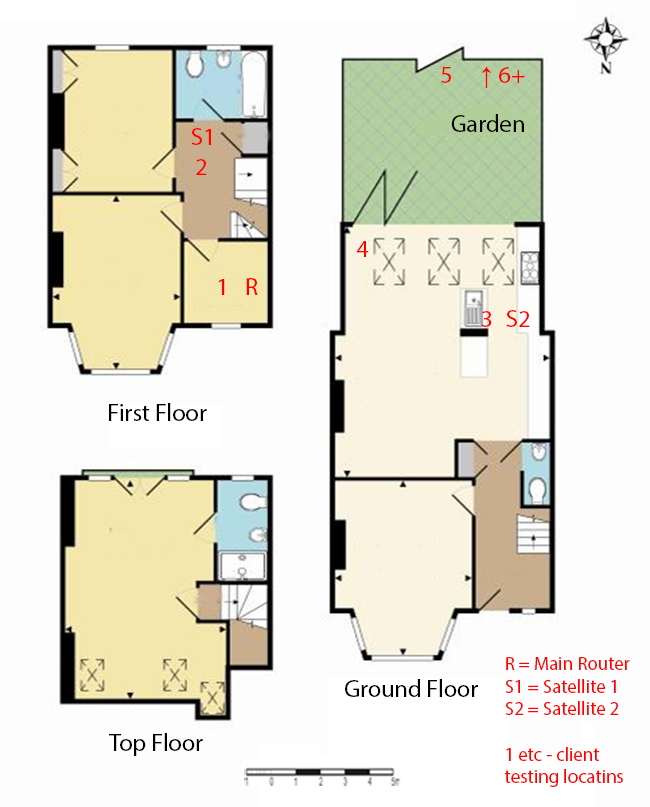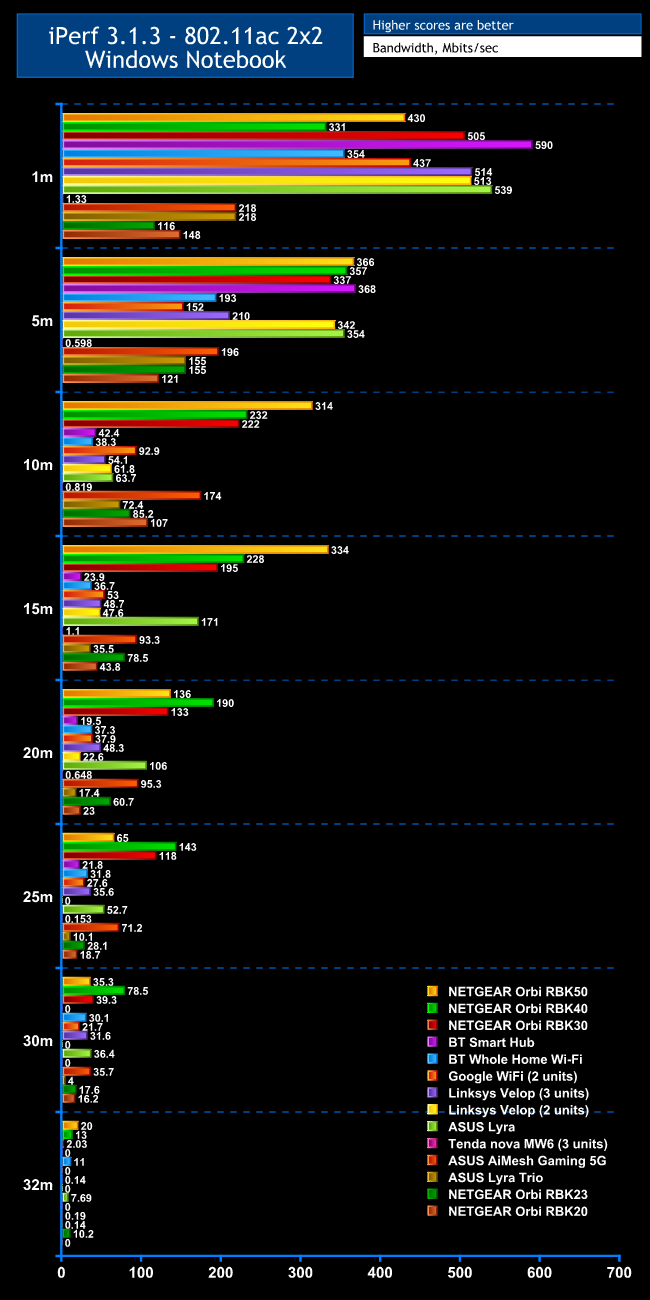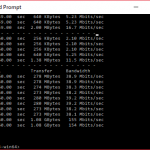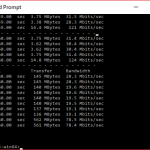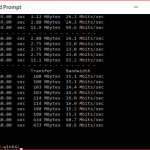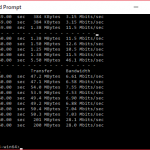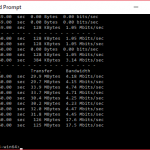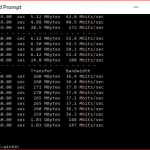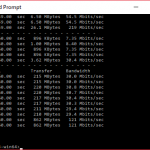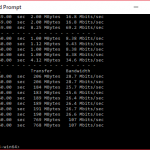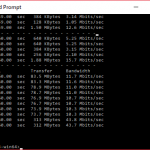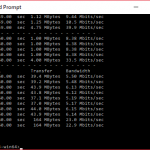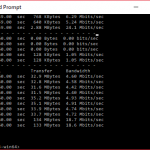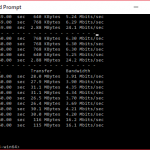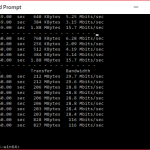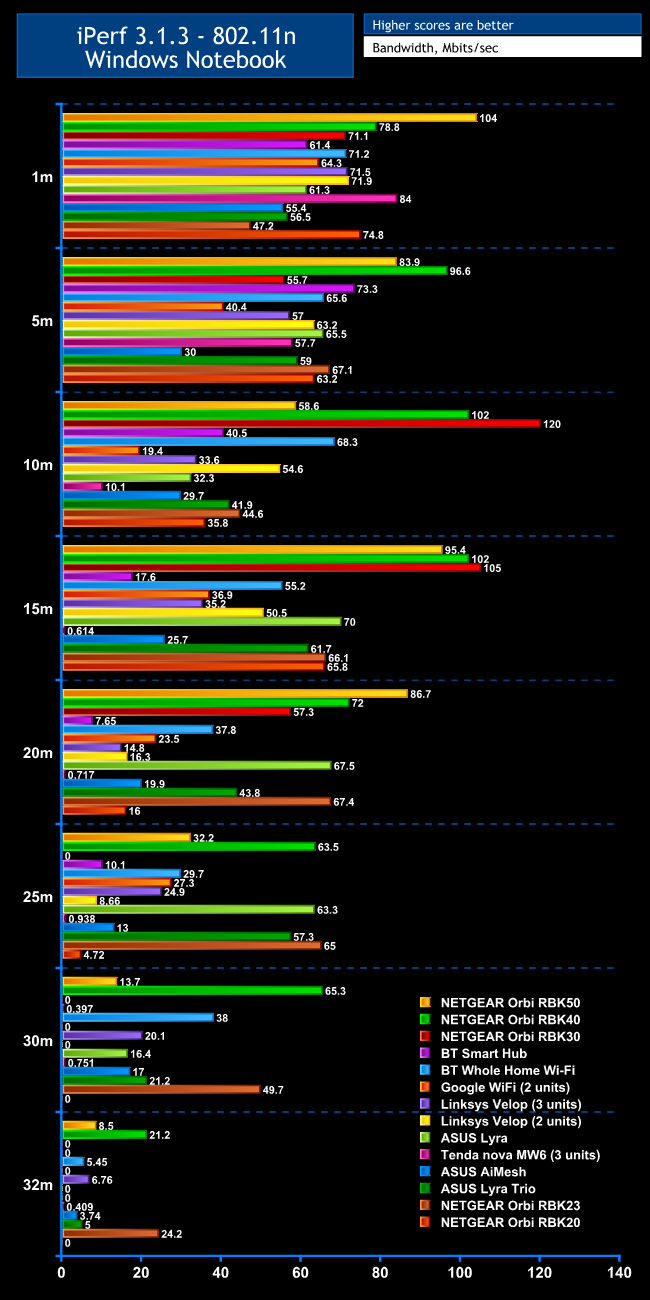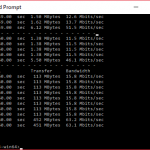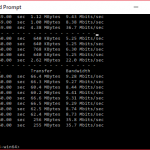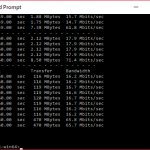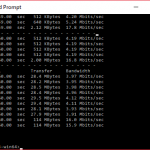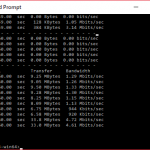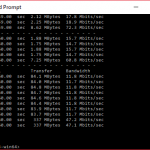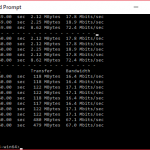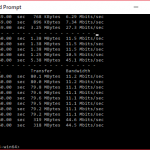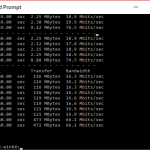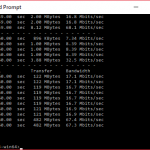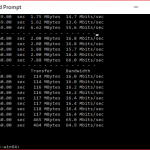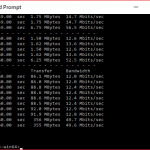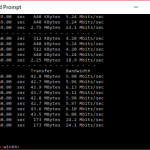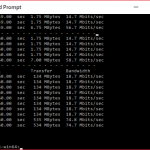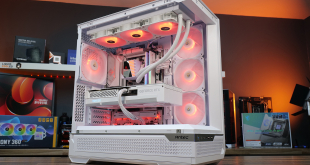We replicated the testing from our Ultimate Mesh WiFi Router Shootout as closely as possible with the NETGEAR Orbi RBK23. However, we no longer had the Apple Macbook Pro in our possession, so had to leave this set of tests out.
We repeated the positions from the Ultimate Mesh WiFi Router Shootout, with eight different locations for our test notebooks. The clients used were an HP Spectre 13 X2 notebook with 2×2 802.11ac WiFi, and an older HP Folio 13, which maxes out at 3×3 802.11n WiFi.
In each case, we used the freely available iPerf 3.1.3 software, which stresses a network by sending packets of random data and measures the throughput. One system acts as a server, and the other as a client, as data is sent between them. In all cases, we used an Armari Windows 10 workstation connected to the primary Lyra unit via Gigabit Ethernet as the server, so that the WiFi was always the slowest connection.
These are the iPerf commands we used:
For the server: iperf3 –s –i 1
For the client: iperf3 –c <IP Address> –P 4 –i 1 –t 60
Note that the client command sends four streams of data simultaneously, simulating a multi-client connection as closely as possible with just one client. It takes 60 throughput readings at one second intervals and then averages the result.
The above diagram shows the layout of the house we used for testing. Note that we didn't test on the top floor of the house because this was directly above the first floor and wouldn't have provided much of a range test. Instead, we used two locations on the same floor as the router (the first floor), then more distant locations on the ground floor extending out the back of the house into the garden.
Each test location, numbered in the diagram above, was approximately 5m away from the last one.
With the mesh networking and standalone router products used for comparison, location 1 was very near to the router, around 1m away. The next location – 2 – was around 5m away, with a wall in the way, but on the same floor. Location 3 was on the floor below, so had walls and a floor in between, but was a further 5m away. Location 4 was the last one actually inside the house. Locations 5 to 7 were then 5m further down the garden. Location 8 was only 2m further down, as this was the end of the garden, but also behind a shed, so posed a significant challenge that only a few mesh WiFi systems can cope with.
We should also say a few words about the location of the satellites. The routers or primary unit were always placed in the same location, in the first floor study next to the broadband. In the case of three-unit mesh systems such as BT Whole Home Wi-Fi and the top Velop option, the second and third satellites were placed at S1 and S2.
With the two-unit Google WiFi, the second unit was placed at S1, due to the recommendation of the setup software. However, in the case of the Orbi RBK50, it was possible to place the second unit at S2, due to the signal strength from these systems.
For the Orbi RBK23 system, we placed the primary unit in location R, with the first satellite at S1, and the second at S2. We then tested as if we had been sent the two-unit RBK20 instead, with the router at R and first satellite at S1.
802.11ac 5GHz
Within 1m, the NETGEAR Orbi RBK23 and RBK20 are clearly having some issues with interference from a neighbour's WiFi or the beam shaping isn't doing its job, with just 116Mbits/sec for the RBK23 and 148Mbits/sec for the RBK20. However, as range increases the relative performance improves commendably.
At 5m, the RBK23 is already faster than it is at closer range, and the RBK20 two-unit setup has only dropped a little, although both exhibit relatively low throughput scores. However, move to 10m, and the RBK20 is already the fifth fastest mesh system we have tested, and the RBK23 is seventh. At 15m,the RBK23 has moved up to sixth with 78.5Mbits/sec, but the RBK20 has dropped into the pack with 43.8Mbits/sec.
The 20m result shows where the RBK23's three units have their strength. The latter is still managing 60.7Mbits/sec, placing it sixth fastest, but the RBK20 has dropped down to 23Mbits/sec. Moving out to 25m, the RBK23 falls a few places with a still-usable 28.1Mbits/sec. But at 30m you're still getting a very usable 17.6Mbit/sec from the RBK23 and 16.2Mbits/sec from the RBK20. The latter drops off completely at the 32m “behind the shed” distance, but the RBK23 is soldiering on with 10.2Mbit/sec, which will still allow for Web browsing, but the RBK20 has dropped its signal.
Overall, performance with an 802.11ac client is a mixed bag. This is not the fastest mesh system close up, as you would expect for its reduced spec, although the speed in really close proximity is disappointing. However, the range for both two-unit and three-unit configurations is very impressive. The RBK23 can provide similar range to the higher-end Orbis, albeit with a reduced throughput.
802.11n 2.4GHz
The picture with 2.4GHz 802.11n is clearer than with 5GHz 802.11ac. The RBK23 still seems to suffer in close proximity, but the RBK20 manages a very competitive 74.8Mbits/sec at 1m. But at 5m. both two- and three-unit setups are in the pack with the RBK23 managing 67.1Mbits/sec and the RBK20 a still decent 63.2Mbits/sec.
At 10m, the RBK23 is seventh fastest with 44.6Mbits/sec, and the RBK20 in ninth with 35.8Mbits/sec. Both actually improve at 15m, with almost identical scores of 66.1Mbits/sec for the RBK23 and 65.8Mbits/sec for the RBK20. At 20m, however, whilst the RBK23 is still posting an excellent 67.4Mbits/sec (fourth fastest we've seen with 802.11n at this range), the RBK20 has dropped off considerably to 16Mbit/sec.
At 25m, the RBK23 actually posts the fastest result we've seen of 65Mbit/sec, although the RBK20 has dropped off to just 4.72Mbits/sec, and its range doesn't go any further than this. The RBK23 is still capable of an excellent 49.7Mbits/sec at 30m, and an absolutely stunning 24.2Mbits/sec at 32m.
Whilst the two-unit RBK20 provides a usefully extended 802.11n range, the RBK23 is truly excellent at wide coverage in the 2.4GHz waveband.
 KitGuru KitGuru.net – Tech News | Hardware News | Hardware Reviews | IOS | Mobile | Gaming | Graphics Cards
KitGuru KitGuru.net – Tech News | Hardware News | Hardware Reviews | IOS | Mobile | Gaming | Graphics Cards


